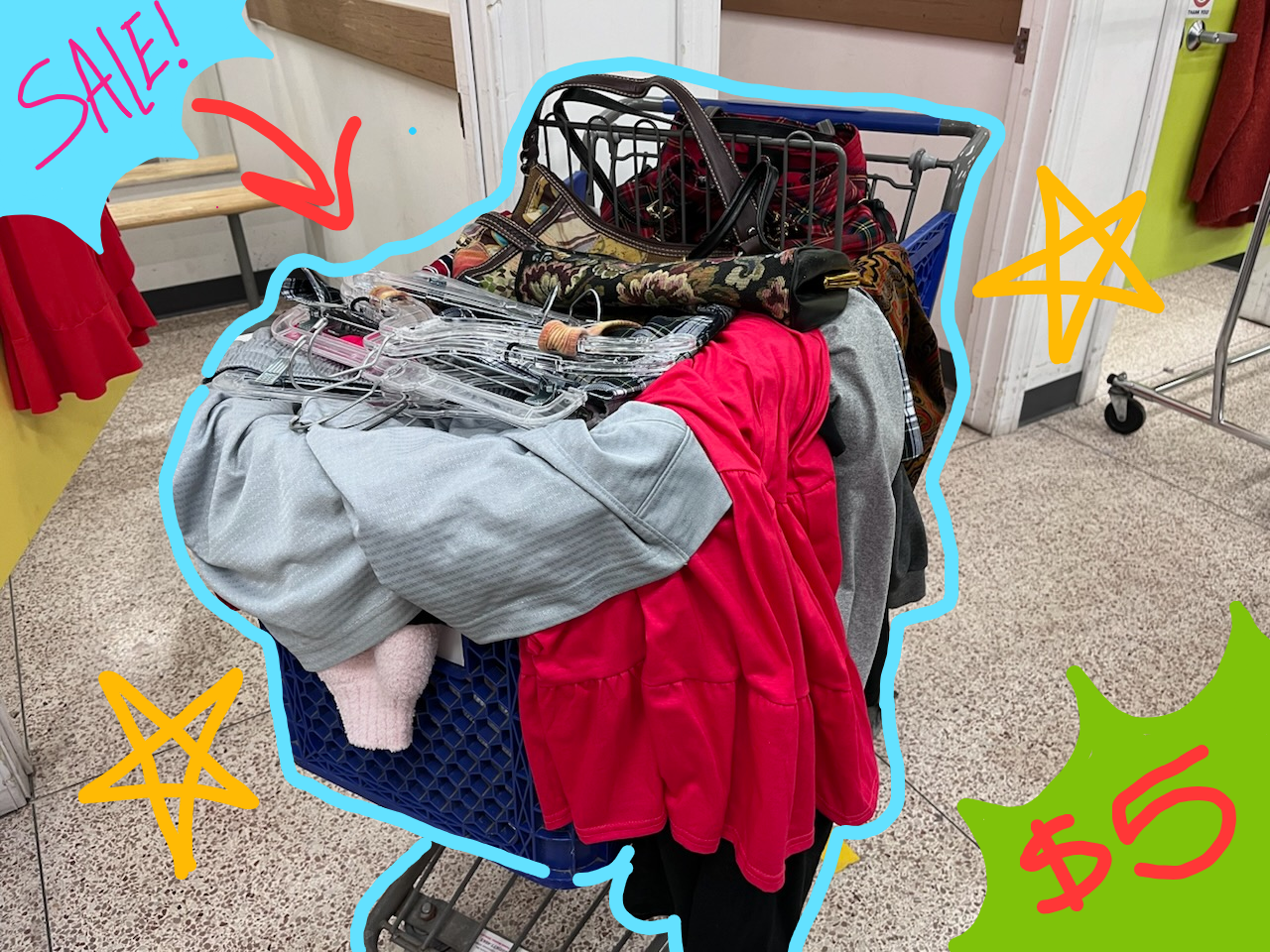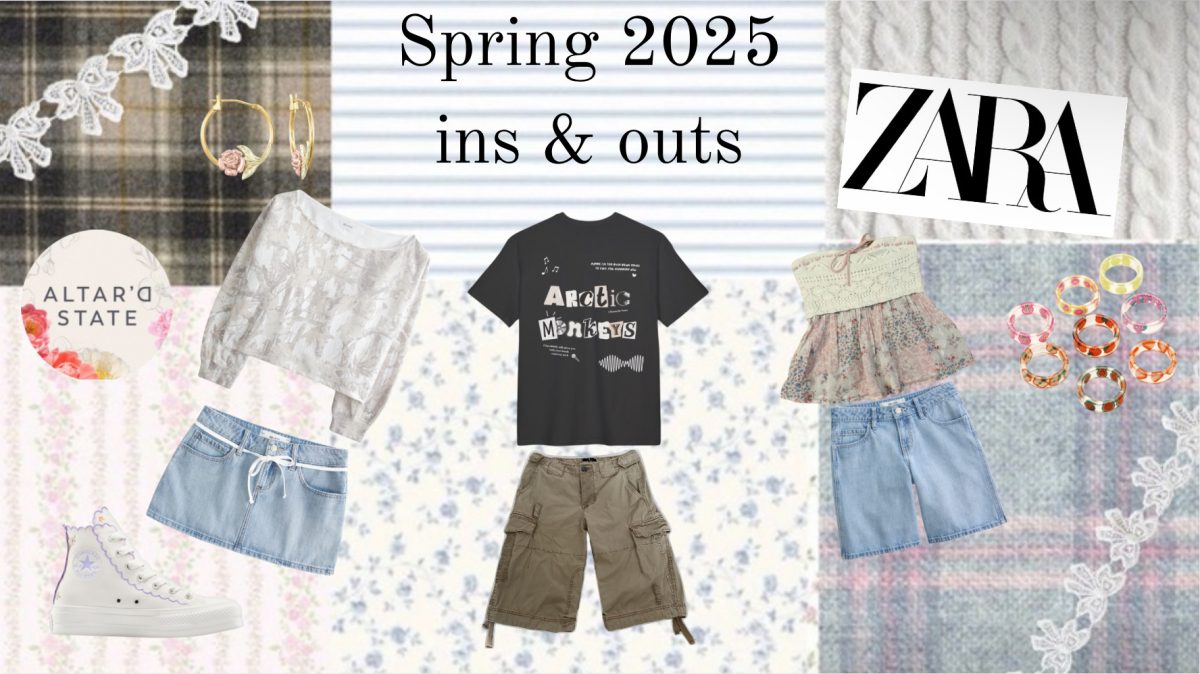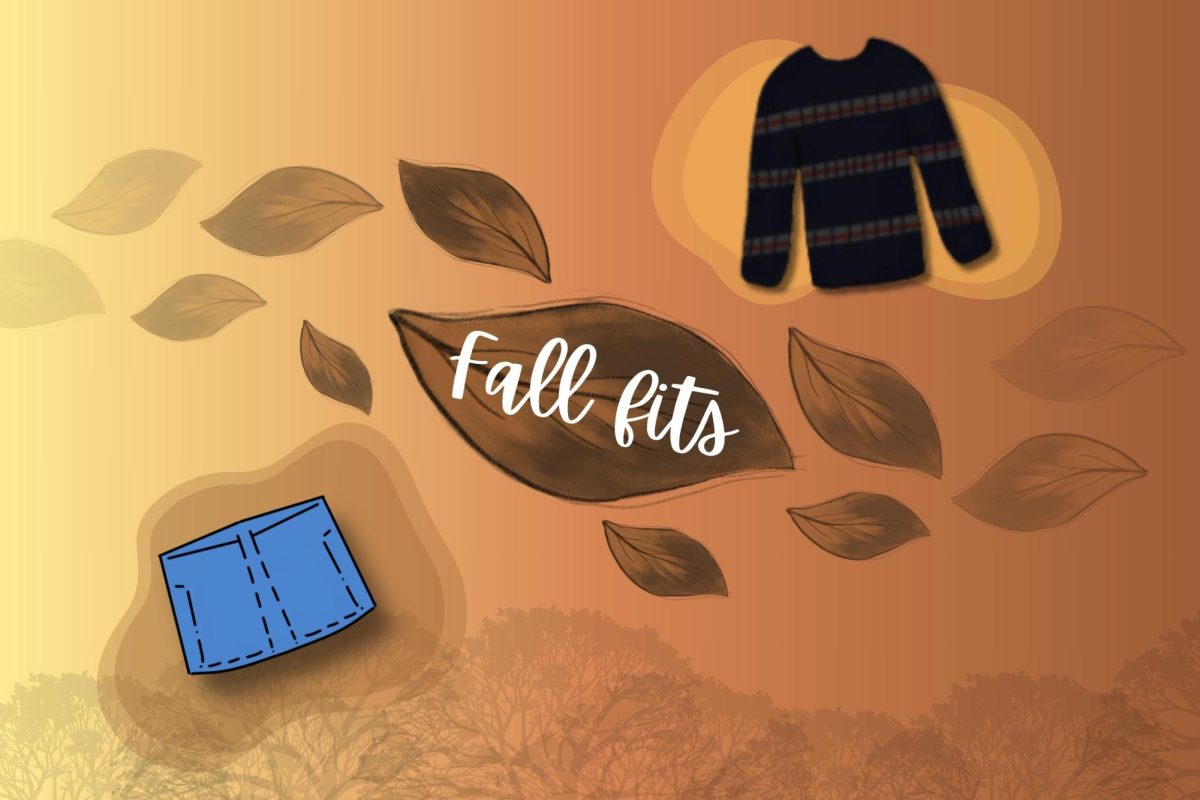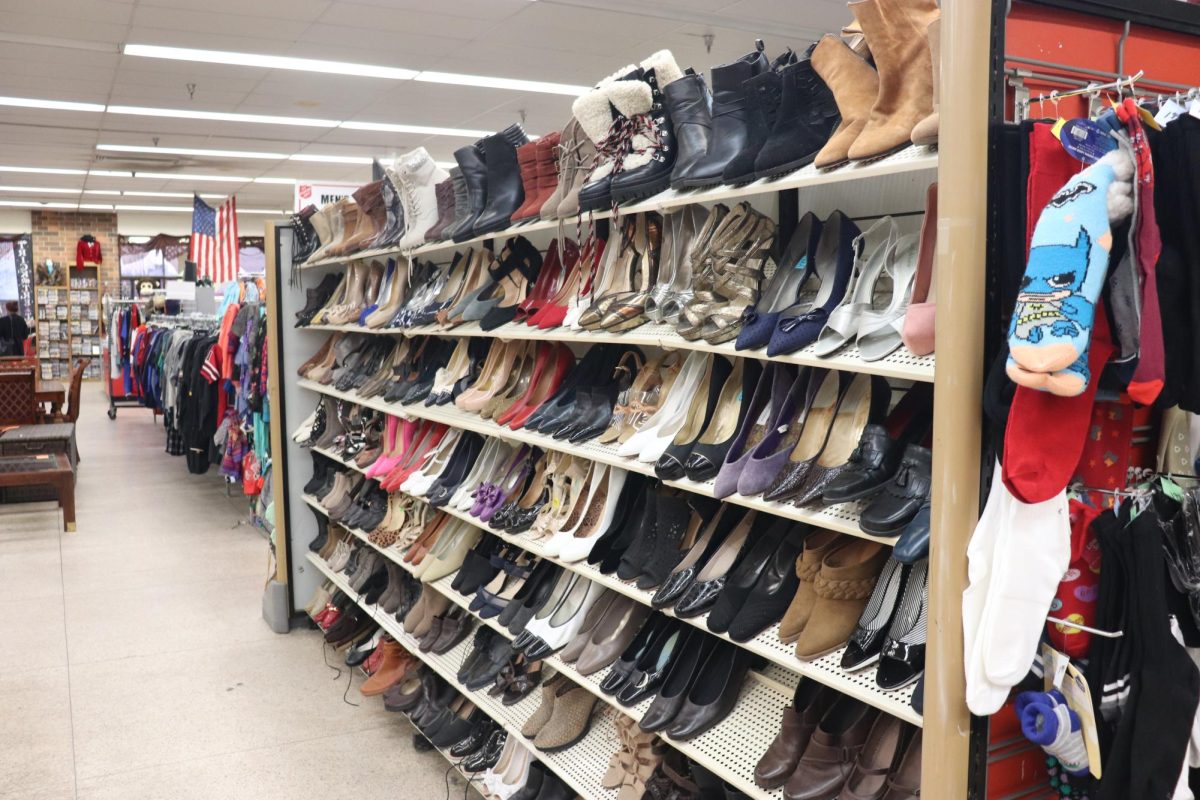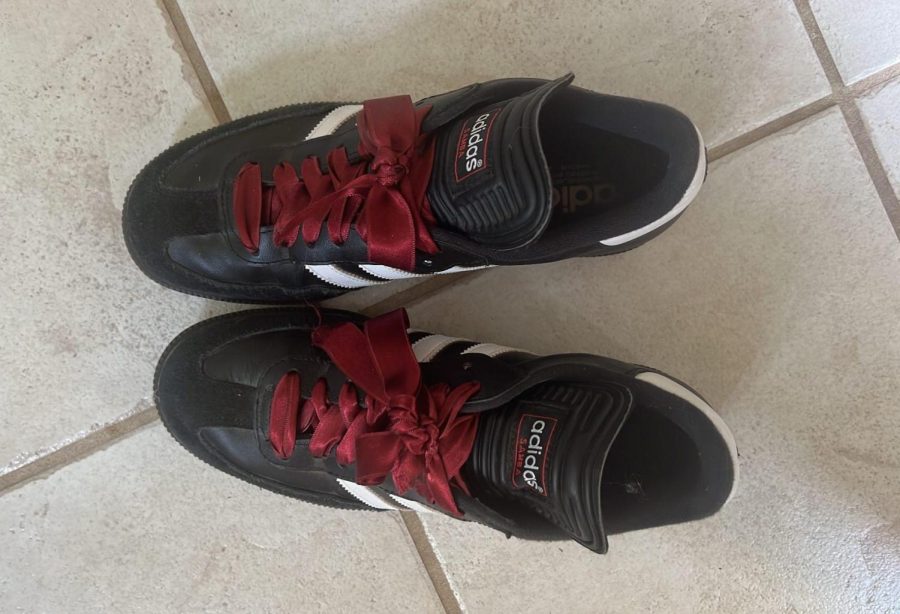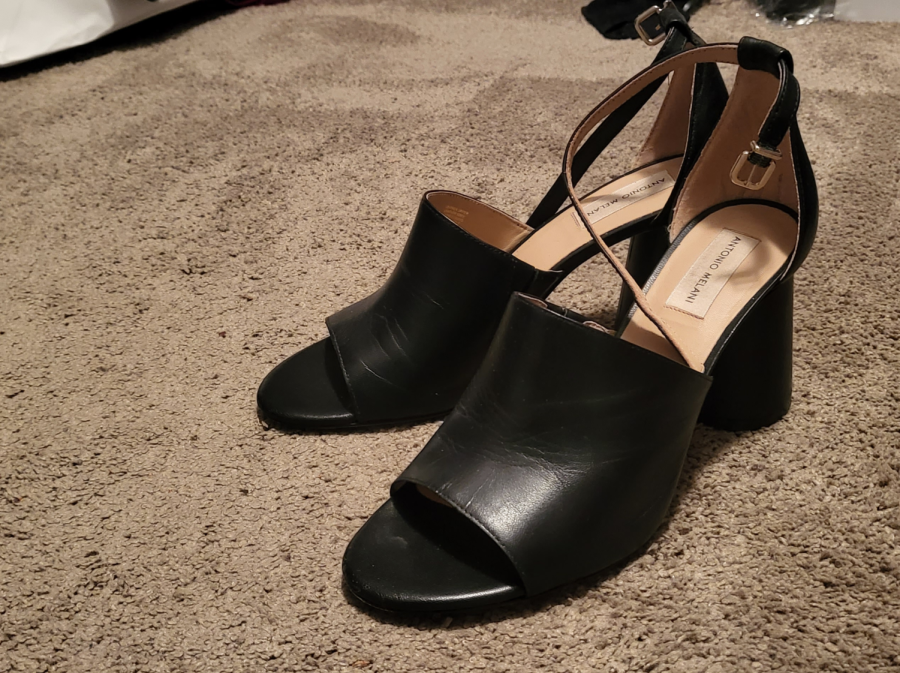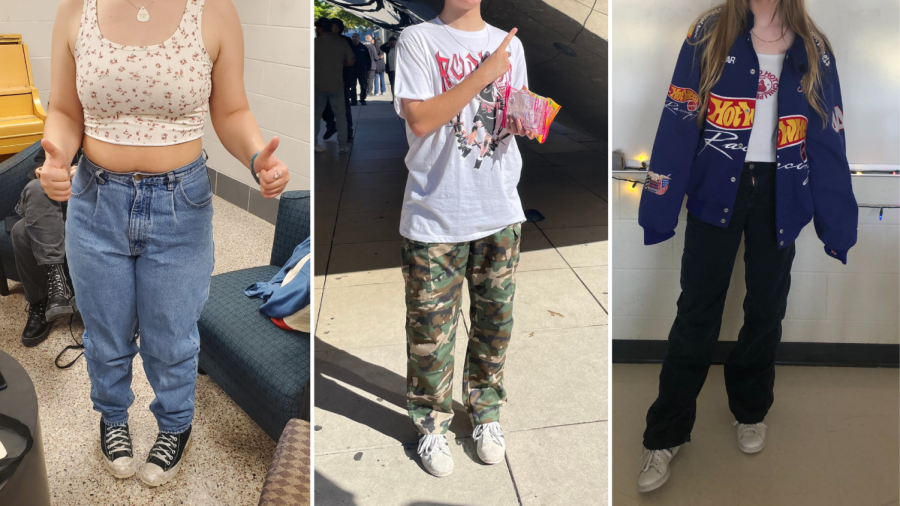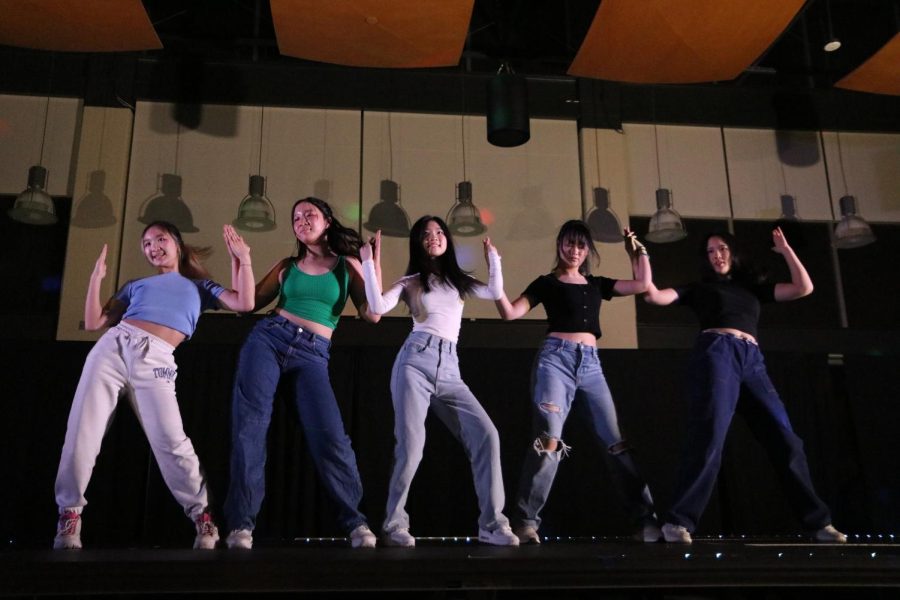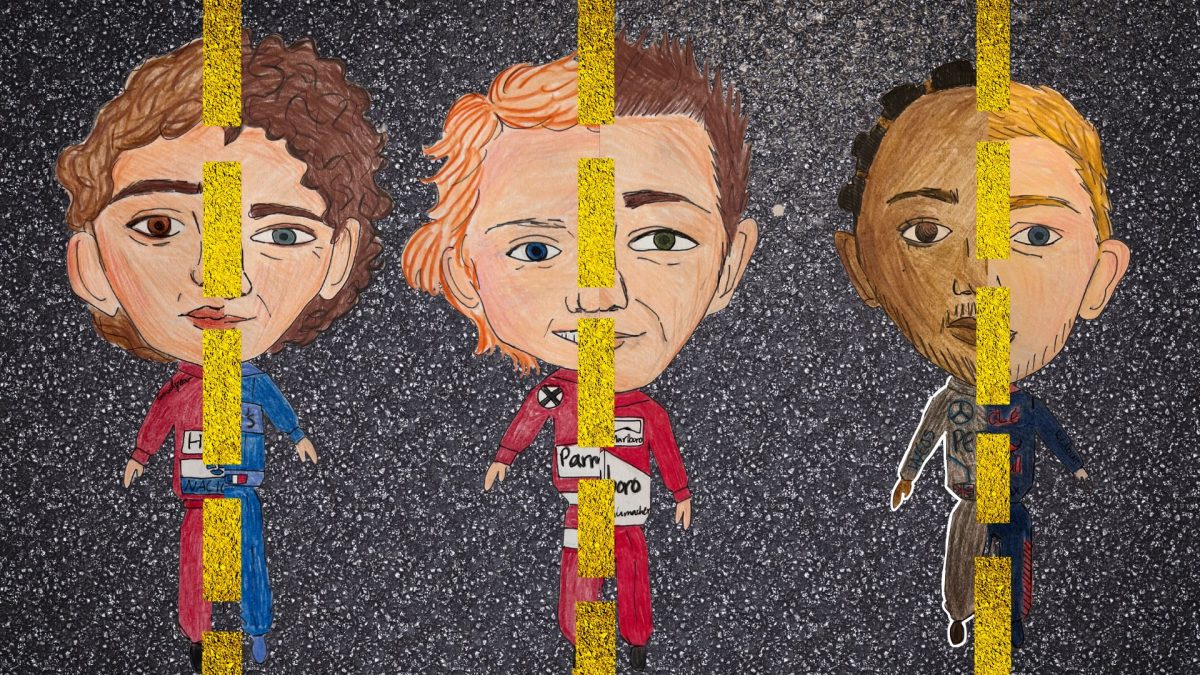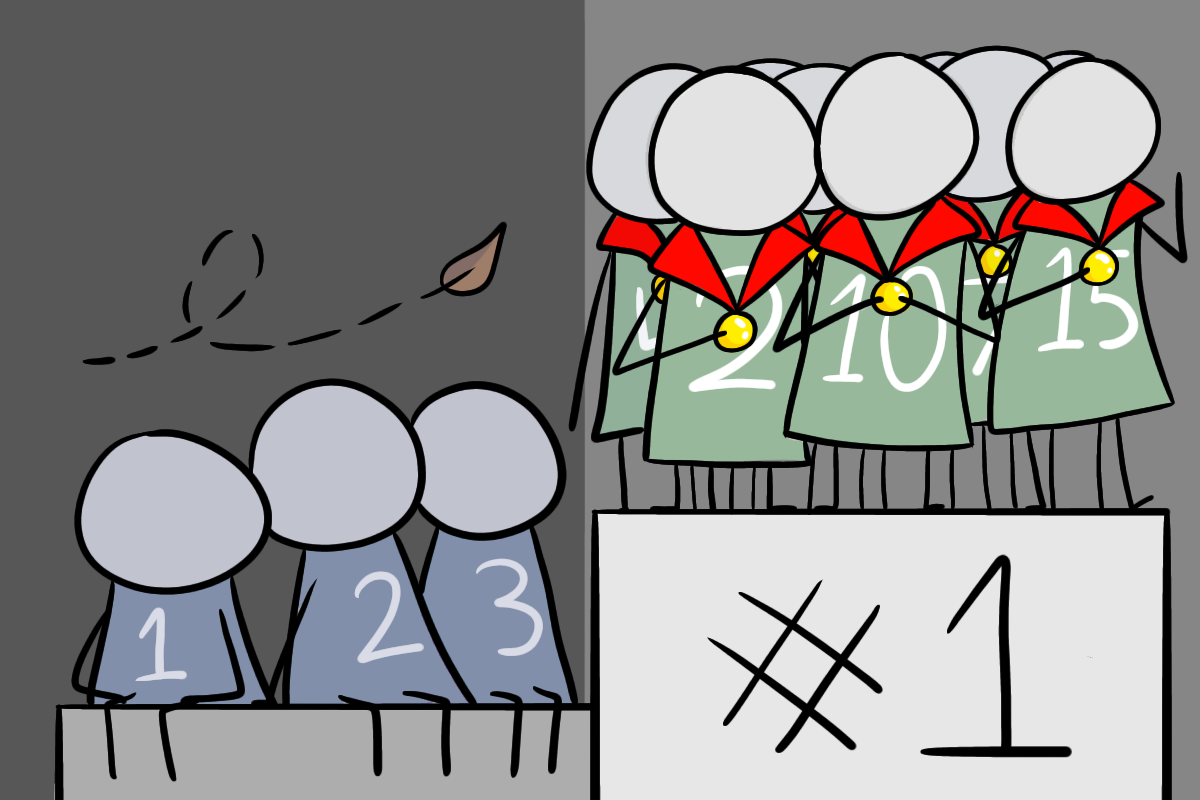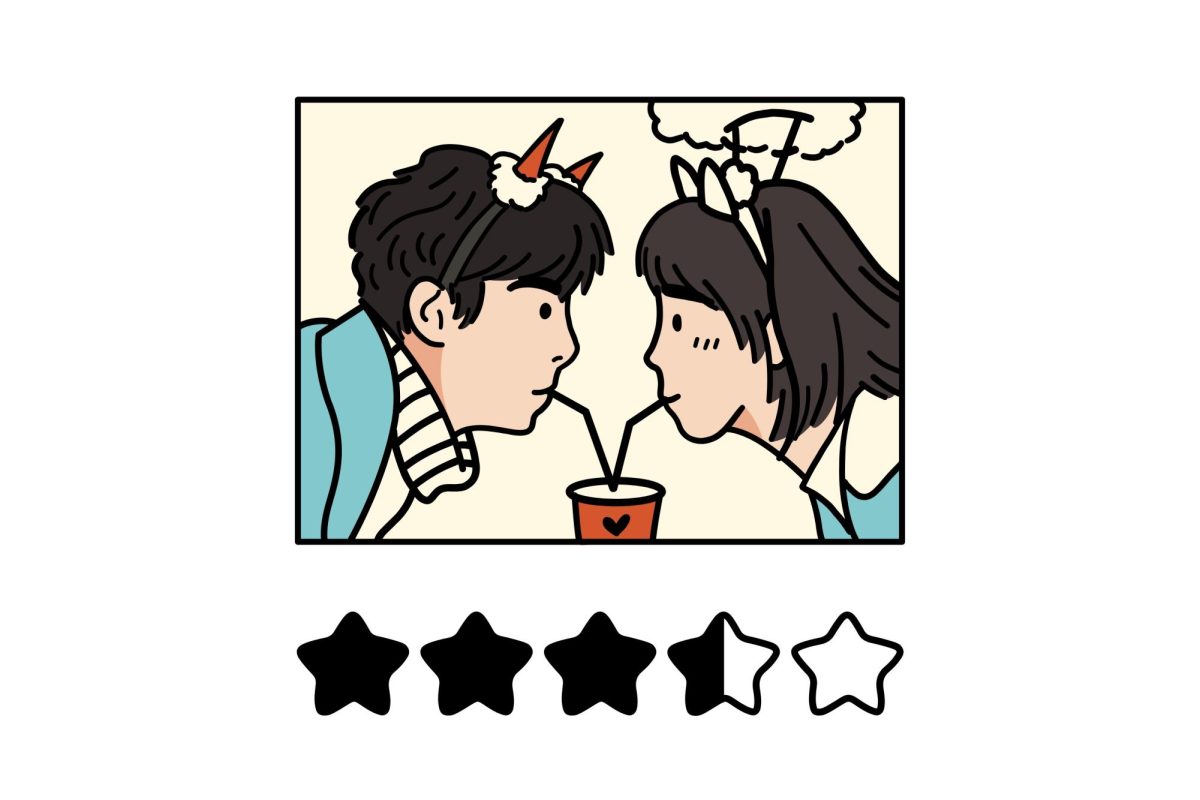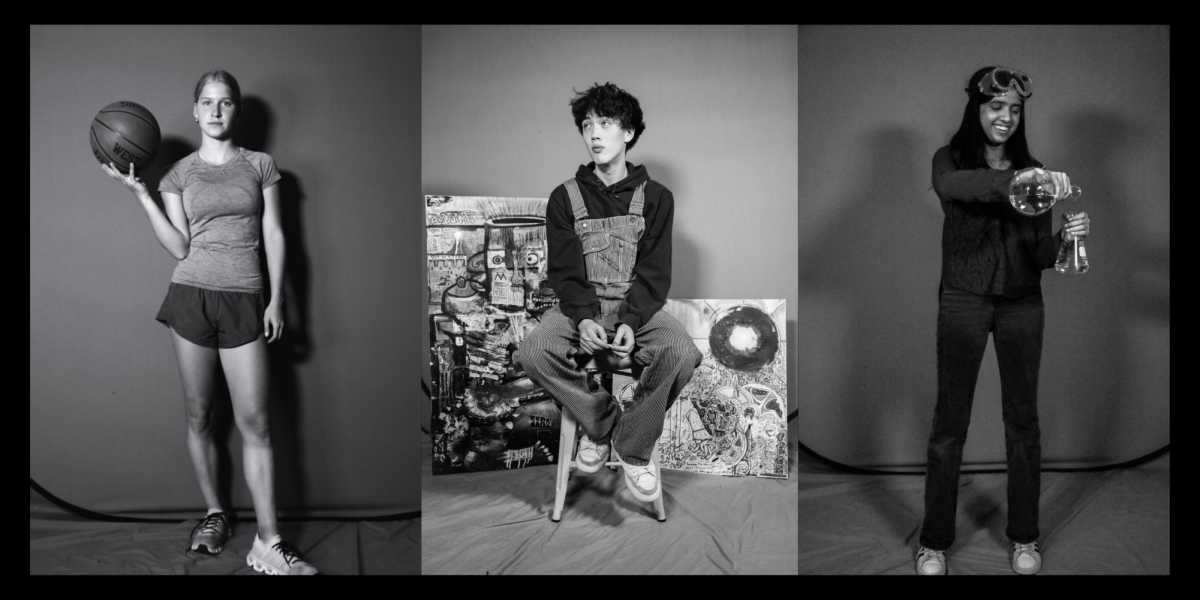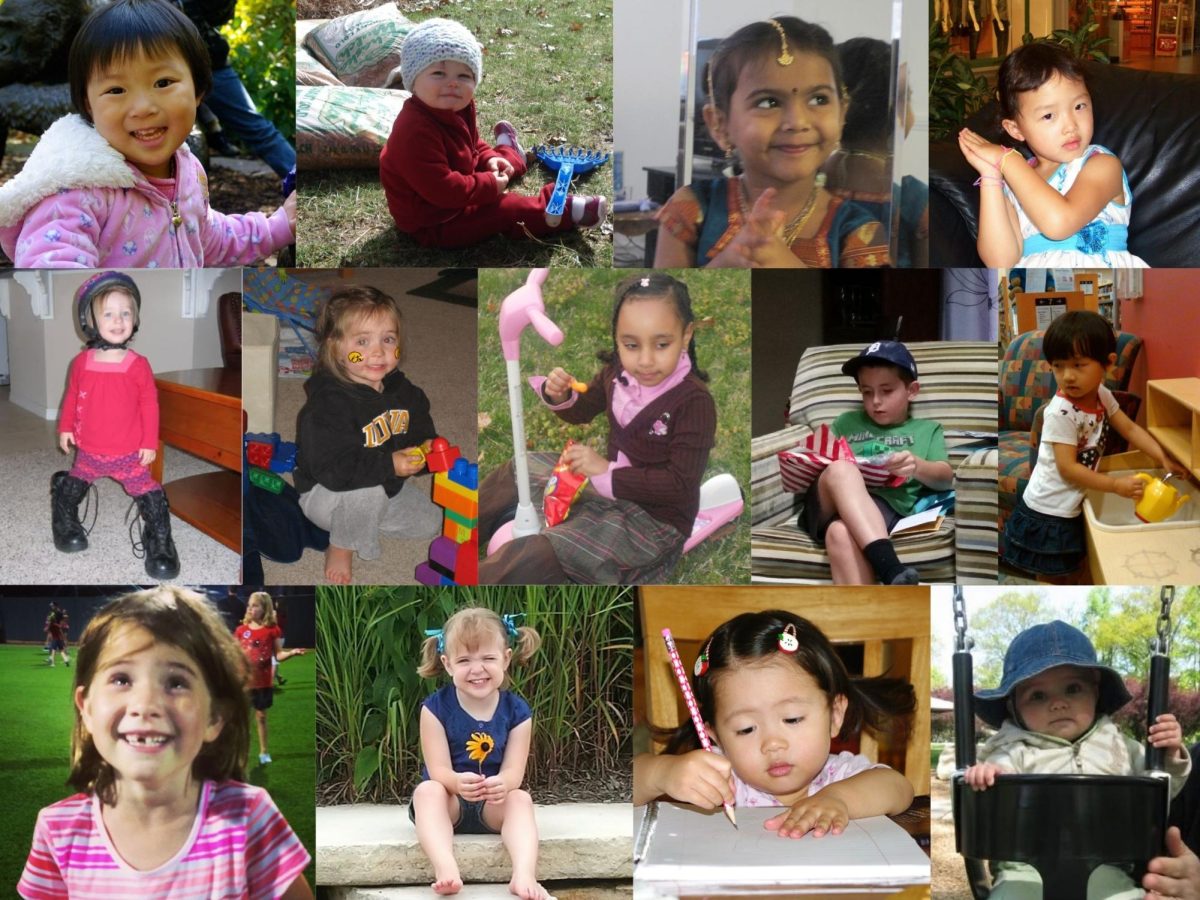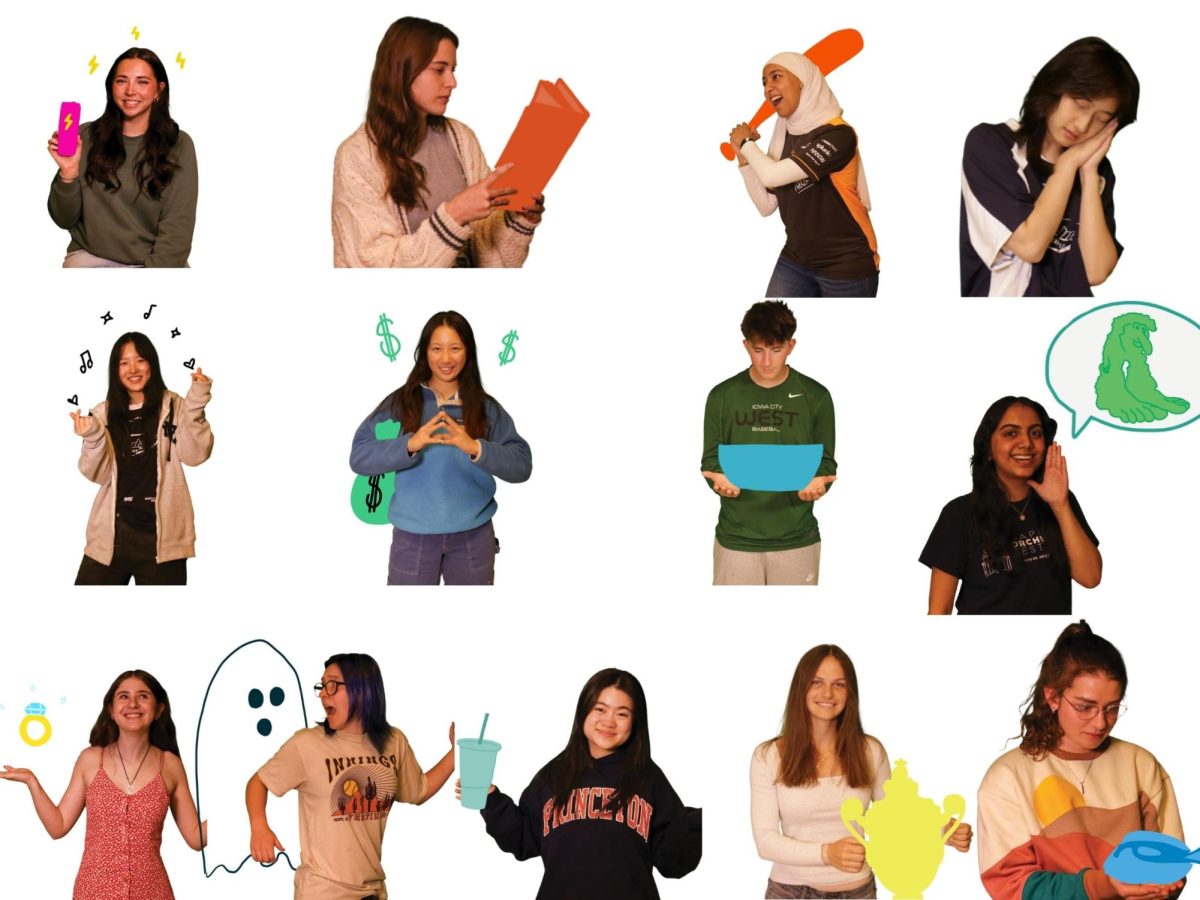When brands like SHEIN, Romwe, Zara and Forever 21 churn out clothes as fast as marketable and target mostly Gen-Z as their consumer audience, there’s a huge uptick in fast fashion over-consumption. Gen-Z stays the most in touch with the online world, with around 95% of teens between the ages of 13 and 17 owning a mobile phone. This essentially unlimited access to the internet allows Gen-Z to take over pop culture and trends, which also creates a direct pathway for brands to advertise and push themselves into the younger generation’s everyday media.
In particular, social media has been utilized as a highly effective source of engagement for brands, with many independent brands starting solely selling and advertising on apps like TikTok and Instagram. Due to the extreme internet traffic that social media has created, fashion trends have accelerated to the point where the regurgitation of the same style then rebranded into a new “core” or “aesthetic,” has become laughable.
When the 20-year-rule – trends being loved for 10 years and then hated for another 10 – that remained true since first being coined 1930s is now being pushed aside as irrelevant due to sped-up trends, what does this mean for the industry as a whole?
Whenever I find myself scrolling through TikTok, I usually encounter quite a few fashion or style-inspiration videos. Oftentimes, the person in the video is showing off their “haul”. Hauls have always existed on the internet, with the basis just being a video showing off several items the original poster had recently bought. However, during the initial lockdown in 2020, there was a specific type of haul circulating on TikTok when people took to online shopping and retail therapy to cope with the loss of normality due to COVID-19. The hauls I’m referring to are SHEIN hauls.
SHEIN is an extremely cheap clothing brand that ships quickly and has generally cute clothes. You can buy five shirts for maybe $20, which would be impossible to do at a mall or regular clothing store. Due to its inexpensive pricing and mass production of goods, SHEIN hauls quickly became mainstream on social media, from full YouTube videos to 30-second TikToks. While this may not sound terrible at first, what ends up happening is an astonishing amount of clothing over-consumption.
As easy as it is to click “add to cart” when scrolling through pages upon pages of cute clothes, no matter how cheap a brand might be when you’re adding a hundred different pieces of clothing, the price starts tallying up. Online shops like Temu and especially TikTok shop now gaining popularity are highly accessible to teens, garnering a massive intake of anything from clothes to backpacks to desk lamps as younger audiences hop on trends.
$200-$800 SHEIN hauls became extremely popular for a while, with people (specifically white, wealthy, conventionally attractive teenage girls) making these TikToks regularly to continue gaining views. The tag on TikTok has over 15 billion views, and no matter what side of TikTok you were on in 2020, it’s likely you came across at least one of these hauls at some point.
SHEIN has been shamed again and again not only for the high levels of over-consumption and carbon emissions but for their awful treatment of generally poor migrant workers in terrible working conditions and very little, non-liveable wages. Child labor plays a big part in the assembly line, with child labor laws in many countries being far more lenient, allowing for loopholes that corporations can jump through for cheap manual labor. Even brands like Nike have histories of abusive labor conditions.
Despite this, brands like SHEIN still dominate the fast fashion market, with SHEIN having an estimated value of about $66 billion as of 2023, which is a sharp drop from the estimated value of $100 billion just the year before.
Since then, SHEIN has made public statements regarding their efforts to decarbonize their production and cut back by about 25% of greenhouse gas emissions by 2030.
While this is great, and more companies should be trying to do the same thing to protect Earth’s environment, which is rapidly declining, there still is a large number of greenhouse gases being released into the atmosphere by not only SHEIN but every brand similar to it, alongside distributors like Amazon, who has also been working to combat climate change and reduce the company’s carbon footprint.
Increased carbon emissions aren’t the only thing that’s been an effect of fast fashion. Inside the clothing industry, there’s been a decline in the quality of clothing as prices for things like cheap polyester fabrics are far more accessible for companies and allow for a wider profit margin when sold for the same price as things like real leather, wool and cashmere products are. It’s difficult to find clothes that are 100% cotton or cashmere, etc, nowadays that isn’t a bit pricier. This, paired with not enough skilled workers in fields like clothing production, results in clothing that, if it had been produced 40 years ago, wouldn’t be deteriorating nearly as quickly as clothes are now.
For example, Levi’s jeans and Doc Martens hold reputations for being forever-lasting. Yet in a market so saturated by fast fashion, both brands have gotten recent backlash as buyers complain about clothes deteriorating in a matter of a few years or even months.
The over-consumption problem goes beyond just brands and fast fashion, though. How does this all tie into personal style?
Earlier, I mentioned the rebranding of styles as “cores” and “aesthetics.” They mean the same thing, tacked onto the end of a few words smushed together and tagged under a TikTok post. A “core” or an “aesthetic” is meant to encapsulate a specific style of dressing that emulates a specific vibe. 2023 saw waves upon waves of these “cores” and “aesthetics” taking over, to the point where it became almost ridiculous.
What started all the way back in 2019 as VSCO girls and then bloomed into 2020 with cottagecore has now become a constant need to brand something as a “core”. The ironic part is, this tagging of specific “cores” is meant to be unique or niche but because of how often the word gets thrown around now, it honestly feels more ridiculous.
A girl in a pink outfit with frills and hyper-feminine elements can dub her outfit as ‘#girlblogger’ ‘#coquette,’ ‘#dollette,’ ‘#dollycore’ and ‘#lanadelreycore’ ‘#coquettecore’, – the list goes on – and have people generally understand what she means.
Coquette as a word has existed since the 1800s, and as a style, it is something that’s been part of popular culture for several years. Coquette, broken down, means “a woman that flirts” – something that aligns with the overall style associated with the word. The style is very cute and sweet, with lots of lace and delicate elements and oftentimes playful in its girlish nature.
Other “cores” like “farmers daughter,” “blokette” and “office siren” have their respective clothing styles as well. Your oversized jersey thrown over a pair of shorts and Adidas Sambas isn’t sporty anymore, it’s actually blokette. Combining the words “bloke” and “coquette,” the style is exactly what it sounds like, sportswear that’s usually in men’s sizing and an added bit of feminity like hair ribbons, heels or a skirt underneath a basketball jersey or FIFA World Cup merchandise. You’re not business casual, you’re an office siren reporting for duty in smart, thin wire glasses that you never actually look through the lenses of because they’re too small.
Farmer’s Daughter is a distinctly midwestern and southern USA-inspired aesthetic full of gingham, white skirts, cowboy boots and pops of color like red bags, bows and heart necklaces.
It’s highly unrealistic that anyone is really tromping around in white linen dresses on farms with lace detailing and bows in their hair, but that’s not the point. Farmer’s Daughter mixes in a general feeling of being in the country, making a lot of callbacks to what Coquette originally was all the way back in 2014 on Tumblr, which has been rebranded as “Americana.”
Americana is another aesthetic that aligns with several others that mostly focuses on the feeling of being incredibly all-American but not in the white-picket-fence American Dream way. Rather, Americana highlights the working class and rural America in the 70s sets the stage.
Girls in ripped jean shorts working at a part-time job in 100-degree weather, buying a glass bottle of Coca-Cola and sitting in lawn chairs in the trailer park watching younger siblings chase lightning bugs and men in cowboy hats getting home late from work and on the weekends taking a beat-up red Chevrolet up to the city to make fun of the wealthy in a cute vintage diner while the jukebox in the corner plays “American Pie” by Dean Martin.
Overall these “cores” and “aesthetics” are harmless fun. The issue is, that because fashion is being narrowed down into specific styles that align with music artists, brands and even lifestyles, people begin to quickly buy whatever is on-trend to align themselves with a personality entirely designed by the internet. When you’re buying a lot of clothes to keep up with a microtrend that’ll be replaced in a year or two, there comes over-consumption swooping in. There’s also a loss of real personal style when all someone does is try to subscribe to whatever trend is cropping up on there for you page the most.
I think of personal style as something that you grow into naturally, figuring out what looks good on your body and makes you feel good about yourself. If all I did was try and be coquette, I wouldn’t have a personal style anymore, since I’d just be trying to copy everyone else.
A way to combat the problem of fast fashion corporations and being too influenced by every microtrend is thrifting. Thrift stores are donated to by essentially every single age range, from all different periods and some clothes can circulate through thrift stores over decades and decades. Hidden gems can pop out of nowhere on some random Wednesday afternoon after Goodwill restocks.
While more time-consuming than sitting in bed and online shopping may be, thrifting is so much more fun and you never know what you’re going to find. You can walk into a Salvation Army with a vague hope for a pair of sweatpants and leave with a bag full of grandma sweaters – all for cheaper than you would have gotten them online!
Thrifting can let you find your style by looking through the racks of clothes and just picking out something you might think is cute to try on. Instead of an Instagram post with links to every product or a TikTok promoting a specific shop, you’re going through real, physical clothes that you can tell right away whether they’re good quality, what condition they’re in and so on.
Fashion industry waste is a massive contributor to climate change and when the EPA reported America generates about 16 million tons of textile waste a year, you can imagine how extreme the global waste issue is.
Even online shopping like ThredUp and Depop can be better alternatives to bulk-buying from places like SHEIN. These online thrift stores are oftentimes ways for independent stores to reach a larger audience through shipping products and online exposure, along with people who try and make a few bucks off their old clothes that are generally in good condition. However, even these sites come with issues. This time, it’s resellers.
Depop resellers are people who will go to thrift stores and buy anything that they’ve seen trending or might align with trends and then resell those $3, $5 clothes for much more to make a profit. While there’s an argument to be made about how even clothes at thrift stores end up in landfills and reselling is just a way to save clothes and make money, two issues arise.
First, intentionally going to thrift stores and bulk buying shopping carts full of clothes just to resell them for outrageous prices that are oftentimes even more expensive than the original price of a brand is just straight-up scamming. Second-hand clothes have no business being $50-$200.
Second, even though a lot of clothes get sent to landfills from thrift stores, that doesn’t equate to people not buying from thrift stores. Clothing that a Depop reseller buys from a thrift store could have gone to a low-income individual and people who can only afford thrift store prices. Especially with thrifting becoming more popular and normalized versus being looked down upon in the 2000s, a lot of Gen-Z and millennials are thrifting a decent chunk of their wardrobes. Resellers buy items that align with current trends and would have most likely been bought by someone else at a thrift store.
Coming from someone who worked at a thrift store, I find it hard to believe that anyone wouldn’t want to thrift. People can say they feel gross wearing dead people’s clothes or that they don’t trust the quality of thrifted clothing but there’s an instant rebuttal to both complaints. Most people who donate clothes are very much alive and breathing, with a lot of parents donating old clothes that would’ve belonged to a teen or someone in their 20s. Besides, it’s highly unlikely you’d ever buy something that someone was wearing when they died, so fret not.
On the other hand, thrift stores are actually often pretty strict about the quality of their clothes. Stores like Salvation Army sort through clothing to make sure there are no stains or other imperfections with an article of clothing and Goodwill has strict policies about what they put out into the store. You’ll actually have a much better chance of finding high-quality clothing at a thrift store due to vintage items being donated from older generations that were made to last forever.
The problem of over-consumption isn’t something that can disappear overnight and the effects of fast fashion have already left a huge impact on social media trends and, as a result, personal style. The best we can do is become more aware of the fashion industry waste crisis and be more sustainable in the purchasing of clothing.
It’s impossible to escape trends; I am a big fan of current fashion trends like low-rise jeans, red gingham, lace and ribbon detailing and the utter lack of skinny jeans and capris. However, I try to experiment with my style often and I’ve come to understand my own personal style through a lot of trial and error.
When getting dressed you shouldn’t have to fit inside a box of “coastal granddaughter” or “merimaidcore”. What does it even mean to be “bunny pretty” or “fox pretty,” or even more ludicrous, “boy pretty” vs. “girl pretty”? A lot of these trends that focus on looks turned into labels end up constricting people’s self-expression rather than expanding it. It’s fun to think about what animal you might look like or take inspiration from a trending “core” or “aesthetic” but when it reaches the point of idealizing certain styles to be an entire personality, it just ends up making people look like wannabe influencers.
It’s important to also recognize that some people like to comply with only one style. For example, “clean girls” are a popular aesthetic on TikTok that revolves around a healthy, clean lifestyle. Brands associated might be Lululemon and Skims for their high-quality, shapewear and athleisure. However, nobody should ever feel like they’re “dirty” because they aren’t a “clean girl.”
“Cores” and “aesthetics” aren’t inherently harmful, but cramping an entire lifestyle and personality into a glamorized and often unrealistic style often leads to overconsumption and a lack of individualism.


